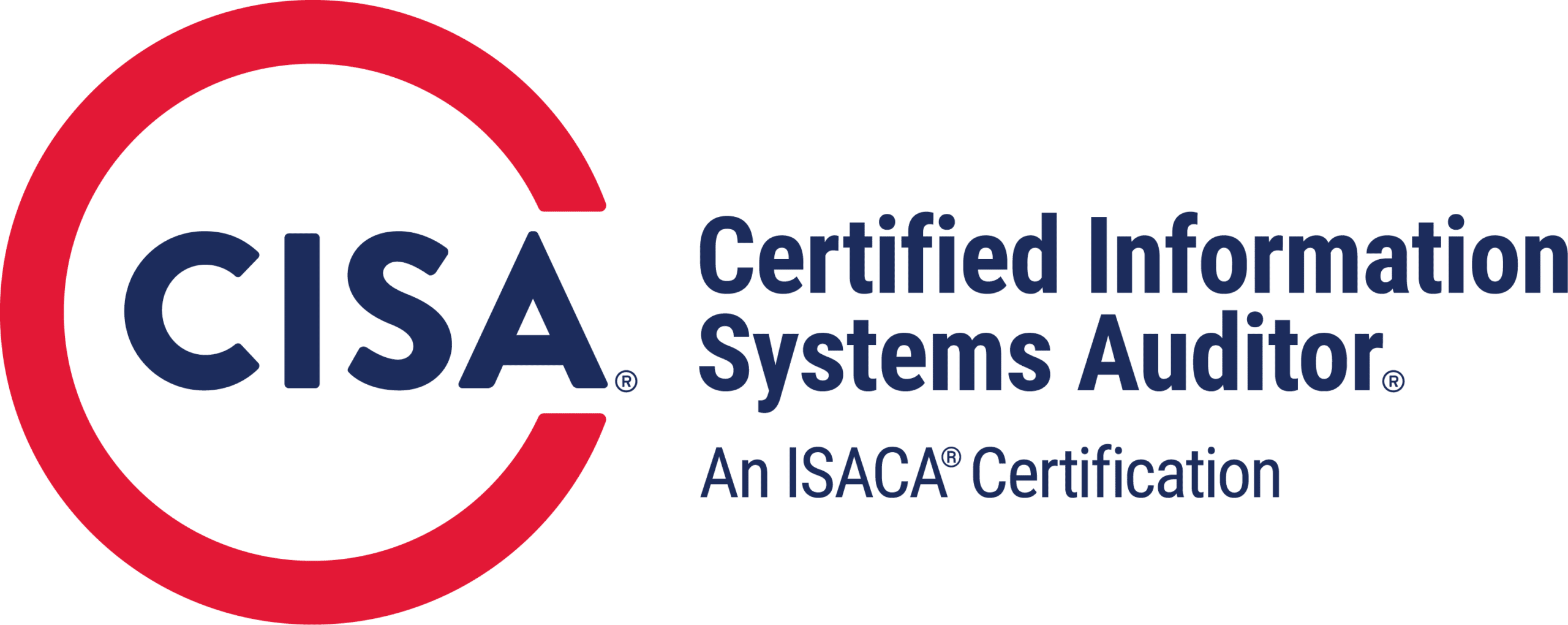An information security policy (ISP) is crucial for organizations to ensure the protection of their sensitive data and maintain cybersecurity. It establishes a set of rules, policies, and procedures that address various aspects of the organization, including data, programs, systems, facilities, and authorized users. By implementing an effective information security policy, organizations can safeguard their reputation, comply with legal and regulatory requirements, protect customer data, and effectively respond to cyber security risks.
Key Takeaways:
- An information security policy is essential for preventing security incidents and meeting compliance requirements.
- It establishes guidelines for handling and protecting sensitive information to maintain confidentiality, integrity, and availability.
- Compliance with legal and regulatory requirements such as GDPR and HIPAA is facilitated by an information security policy.
- An information security policy helps protect customer data and maintain the trust and confidence of stakeholders.
- Regular review and updates to the information security policy are necessary to address new threats and regulations.
What is an Information Security Policy?
An information security policy, also known as an IT security policy, is a document that outlines the rules, expectations, and overall approach that an organization uses to maintain the confidentiality, integrity, and availability of its data. It provides guidance for employees and users on how to handle and protect sensitive information, and it sets the standards for ensuring the security of IT assets and resources.
The policy addresses various aspects of information security, including access control, data classification, data protection regulations, data backup requirements, movement of data, security awareness training, and the responsibilities and duties of employees. The policy is essential for guiding the implementation of technical controls, setting clear expectations for employees, meeting regulatory and compliance requirements, and improving organizational efficiency. It should be tailored to the organization’s risk appetite and regularly updated to address new threats and technology advancements.
“An information security policy provides the foundation for establishing a comprehensive security framework within an organization.”
- Access control: Specifies who can access and make decisions about data
- Data classification: Categorizes information based on sensitivity
- Data protection regulations: Ensures compliance with legal requirements
- Data backup requirements: Defines how data should be backed up
- Movement of data: Sets guidelines for transferring data
- Security awareness training: Educates employees on security best practices
- Responsibilities and duties of employees: Outlines the role of individuals in maintaining security
An effective information security policy is crucial for organizations to protect their data, mitigate risks, and demonstrate their commitment to security. By enforcing the policy, organizations can safeguard their sensitive information, maintain the trust of their customers, and ensure the smooth operation of their business.
| Benefits of an Information Security Policy | Key Elements of an Information Security Policy |
|---|---|
| 1. Protects sensitive data | 1. Purpose and objectives |
| 2. Reduces the risk of security incidents | 2. Audience and scope |
| 3. Ensures compliance with regulations | 3. Authority and access control |
| 4. Promotes organizational efficiency | 4. Data classification |
| 5. Establishes a culture of security | 5. Data support and operations |
An information security policy provides the foundation for establishing a comprehensive security framework within an organization. By defining the rules and guidelines, organizations can effectively protect their information assets, maintain regulatory compliance, and reduce the risk of security incidents. It is important for organizations to tailor their policy to their specific needs and regularly review and update it to address evolving threats and technologies.
The Importance of an Information Security Policy
An information security policy is of utmost importance in today’s digital landscape. It serves as a crucial pillar for protecting business integrity and safeguarding sensitive information. Without a comprehensive policy in place, organizations are vulnerable to security breaches and data leaks, which can have severe consequences for their reputation, financial stability, and regulatory compliance. An information security policy ensures that proper measures are in place to prevent security incidents and mitigate their impact. It also helps organizations comply with legal and regulatory requirements such as GDPR, HIPAA, and NIST. Moreover, an information security policy is essential for protecting customer data and responding to inquiries and complaints related to security and data protection. By implementing a robust information security policy, organizations demonstrate their commitment to maintaining the confidentiality, integrity, and availability of their data, and they establish a culture of security throughout the organization.
“The security of your data is our top priority. We understand the risks associated with data breaches and the potential impact on your business. That’s why we have implemented a comprehensive information security policy to ensure the confidentiality and integrity of your valuable data. By adhering to industry best practices and complying with legal and regulatory requirements, we strive to protect your information and maintain your trust.”
By investing time and resources in developing and enforcing an information security policy, organizations can significantly reduce the likelihood and impact of security incidents, comply with legal and regulatory requirements, protect customer data, and enhance overall organizational efficiency. The policy provides a framework for implementing technical controls, establishing user access controls, and defining procedures for data classification and protection. Regular reviews and updates to the policy ensure that it remains effective in addressing new threats and technological advancements. The implementation of an information security policy not only safeguards an organization’s data but also strengthens its reputation and builds trust with customers and business partners.
Key Elements of an Information Security Policy
An information security policy encompasses various key elements that define its scope and objectives. These elements provide a comprehensive framework for protecting an organization’s data and ensuring the confidentiality, integrity, and availability of information assets. Here, we outline the essential components that form the foundation of an effective information security policy.
Purpose
The purpose of an information security policy is to articulate the overall goal and mission of the policy clearly. It defines the organization’s commitment to information security and sets the direction for the security measures and controls that will be implemented. The purpose statement serves as a guiding principle and aligns all subsequent elements of the policy.
Audience
The audience section of an information security policy specifies who the policy applies to and who is responsible for complying with its requirements. This ensures that all employees, contractors, and third parties understand their roles and responsibilities in maintaining information security. By identifying the target audience, the policy can be tailored to address the unique needs and risks of different stakeholders within the organization.
Security Objectives
The security objectives section outlines the specific goals and strategies that the organization aims to achieve through the implementation of the policy. These objectives may include safeguarding sensitive data, minimizing security risks, complying with relevant regulations, and promoting a culture of security awareness. Clear and measurable security objectives help guide the implementation and evaluation of security measures.
Authority and Access Control Policy
The authority and access control policy defines who has the authority to make decisions regarding data access and sharing within the organization. It specifies the roles and responsibilities of individuals and establishes the processes and procedures for granting and revoking access privileges. This element ensures that there is proper accountability and control over information assets.
Data Classification
Data classification is crucial for categorizing information based on its sensitivity and defining the level of protection required for each category. The data classification section of an information security policy outlines the criteria and procedures for classifying data, as well as the associated security controls. This element helps prioritize security efforts based on the value and criticality of different types of data.
Data Support and Operations
The data support and operations section of an information security policy addresses how data should be handled throughout its lifecycle. It outlines procedures for data backup, storage, transmission, and disposal. Additionally, it may include guidelines for secure communication protocols and data protection regulations. This element ensures that data is properly managed and protected at all stages.
Security Awareness Training
Security awareness training is a crucial component of an effective information security policy. This section outlines the organization’s commitment to providing training and education to employees, contractors, and other relevant stakeholders. It specifies the topics to be covered, training methods, and the frequency of training sessions. By promoting security awareness, the policy seeks to empower individuals to make informed decisions and take proactive measures to protect information assets.
Responsibilities
The responsibilities section of an information security policy assigns ownership and accountability for various aspects of security management. It outlines the duties and responsibilities of employees, managers, and other stakeholders in ensuring compliance with the policy. This element helps establish a clear line of responsibility and promotes a culture of security throughout the organization.
By including these key elements in an information security policy, organizations can establish a robust framework for protecting their data, mitigating security risks, and complying with regulatory requirements. It provides a comprehensive roadmap for implementing and maintaining effective security controls, ensuring the confidentiality, integrity, and availability of information assets.
Best Practices for Information Security Management
Implementing Additional Policies
When it comes to managing information security, it is important for organizations to go beyond just having an information security policy. Implementing additional policies can help address specific aspects of security management and enhance overall protection. Some of these policies include:
- Acceptable Use Policy (AUP): Defines constraints on the use of corporate computers and networks, ensuring that they are used in a responsible and secure manner.
- Access Control Policy: Establishes the rules and procedures for accessing an organization’s data and information systems, ensuring that only authorized users have appropriate access privileges.
- Change Management Policy: Provides a formal process for making changes to IT systems, software development, and security measures, ensuring that changes are properly planned, tested, and implemented.
- Incident Response Policy: Outlines how the organization will detect, respond to, and remediate security incidents, minimizing the impact of breaches and ensuring a coordinated and effective response.
- Remote Access Policy: Specifies the acceptable methods for remotely connecting to an organization’s internal networks, ensuring secure remote access while minimizing the risk of unauthorized access.
Regular Review and Training
Another best practice for information security management is to regularly review and update policies to address new threats, technologies, and compliance requirements. This ensures that the policy remains relevant and effective in the ever-evolving landscape of cybersecurity. It is also crucial to provide comprehensive training to employees, ensuring that they understand the policy and their responsibilities in maintaining information security. Training programs can cover topics such as data classification, access control procedures, incident response protocols, and secure communication practices.
Continuous Improvement and Risk Management
Information security management should be viewed as an ongoing process of continuous improvement. Organizations should regularly assess and reassess their security posture, identify vulnerabilities, and implement measures to mitigate risks. Risk management practices, such as conducting risk assessments and implementing risk mitigation strategies, help organizations identify and prioritize potential threats and vulnerabilities. This enables them to allocate resources effectively and proactively address security risks to protect their information assets.
| Best Practices for Information Security Management | Benefits |
|---|---|
| Implement additional policies, such as Acceptable Use Policy, Access Control Policy, Change Management Policy, Incident Response Policy, and Remote Access Policy. | Enhances overall protection and addresses specific aspects of security management. |
| Regularly review and update policies to address new threats, technologies, and compliance requirements. | Ensures the policy remains relevant and effective in the ever-evolving cybersecurity landscape. |
| Provide comprehensive training to employees to ensure their understanding of the policy and their responsibilities. | Empowers employees to effectively contribute to maintaining information security. |
| Continuously assess and improve the organization’s security posture through risk management practices. | Enables proactive identification and mitigation of potential threats and vulnerabilities. |
Benefits of an Information Security Policy
Implementing an information security policy offers several benefits to organizations. Firstly, it helps protect sensitive data and ensures that proper security measures are in place to prevent unauthorized access. By clearly outlining the rules and guidelines for handling and protecting information, the policy establishes a framework for maintaining data integrity and confidentiality. This reduces the risk of security incidents and data breaches, safeguarding the organization’s reputation and customers’ trust.
A robust information security policy also plays a crucial role in ensuring compliance with legal and regulatory requirements. With data protection regulations becoming increasingly stringent, organizations must demonstrate their commitment to protecting customer data. An information security policy ensures that appropriate security controls are in place to meet these requirements, reducing the risk of non-compliance and potential legal consequences.
In addition to data protection and compliance benefits, an information security policy also promotes organizational efficiency. By providing clear guidelines and expectations for employees, the policy helps streamline processes and foster a culture of security throughout the organization. This leads to improved productivity and reduces the likelihood of security incidents resulting from human error. The policy also facilitates consistent monitoring and enforcement of security measures, ensuring that all areas of information security are consistently addressed.
| Benefits of an Information Security Policy: | |
|---|---|
| Protects sensitive data | Reduces the risk of security incidents and data breaches |
| Ensures compliance with legal and regulatory requirements | Promotes a culture of security |
| Improves organizational efficiency | Streamlines processes and reduces human error |
Tips for Developing an Effective Information Security Policy
Developing an effective information security policy requires careful planning and consideration. At our company, we have found several key tips that can help organizations create a robust and comprehensive policy tailored to their specific needs.
- Obtain executive buy-in: It is crucial to get the support and endorsement of executive management for the information security policy. This will ensure that the policy has the necessary resources and authority to be effectively implemented and enforced.
- Conduct a risk analysis: A thorough risk analysis should be conducted to identify and prioritize the security needs and threats faced by the organization. This analysis will help in determining the appropriate security measures and controls to include in the policy.
- Customize the policy: Each organization is unique in terms of its operations, industry requirements, and risk appetite. Therefore, it is essential to customize the information security policy to align with the specific needs and circumstances of the organization.
- Regularly review and update the policy: In the ever-evolving landscape of cybersecurity, it is important to regularly review and update the information security policy to address new threats, technologies, and compliance requirements. This ensures the policy remains relevant and effective over time.
- Provide comprehensive training: Employees play a critical role in maintaining information security. Therefore, it is important to provide comprehensive training to employees to ensure they understand the policy and their responsibilities in maintaining information security.
By following these tips, organizations can develop an information security policy that is not only effective in preventing security incidents but also aligned with their unique needs and compliant with relevant regulations. It is crucial to approach the development of the policy with a proactive mindset, considering the specific risks and requirements of the organization.
Examples and Templates of Information Security Policies
When developing an information security policy, organizations can benefit from utilizing examples and templates as a starting point. These resources provide valuable guidance on the structure, content, and language used in creating a comprehensive policy. Whether an organization needs an industry-specific policy or a customized policy to meet its unique needs, there are various options available.
Industry-specific policies cater to sectors such as healthcare, finance, and government, which have specific compliance requirements and regulations. These policies are tailored to the industry’s unique security challenges and can help organizations align with industry best practices. On the other hand, organization-specific policies are designed to meet the specific needs, risks, and resources of a particular organization. These policies consider the organization’s operational aspects, risk appetite, and compliance obligations.
Utilizing examples and templates saves time and provides a foundation for developing an effective information security policy. However, it is important for organizations to review and customize these resources to ensure they align with their specific needs and comply with applicable laws and regulations. By leveraging examples and templates, organizations can jumpstart their policy development process and enhance their overall security posture.
Table: Comparison of Available Information Security Policy Templates
| Template Name | Industry Focus | Key Features |
|---|---|---|
| Standard Security Policy Template | General | Provides a broad framework for information security management |
| Healthcare Security Policy Template | Healthcare | Includes specific provisions for compliance with HIPAA regulations |
| Financial Security Policy Template | Finance | Addresses industry-specific regulations, such as GLBA and PCI-DSS |
| Government Security Policy Template | Government | Aligns with regulatory requirements for government agencies |
| Customizable Security Policy Template | Any | Allows organizations to tailor the policy to their unique needs and risks |
SANS has published a huge collection of Cybersecurity templates that you can use in your organization free of charge.
Conclusion
In conclusion, an information security policy plays a crucial role in protecting our organization’s data, systems, and reputation. By implementing a comprehensive policy, we ensure the confidentiality, integrity, and availability of our information assets. The policy establishes clear rules and guidelines, helping to prevent security incidents and reduce risks.
Moreover, an effective information security policy ensures that we comply with legal and regulatory requirements, providing us with the necessary framework for risk management and demonstrating our commitment to data protection and security. In today’s digital landscape, where cyber threats are on the rise, neglecting the importance of an information security policy is not an option.
Investing in the development and enforcement of an information security policy not only safeguards our organization but also instills a culture of security throughout our workforce. It is essential to prioritize the protection of our stakeholders’ interests, maintain their trust, and secure the confidence of our customers and partners. By embracing the importance of information security policy, we can proactively manage risks, maintain compliance, and uphold our commitment to protecting our valuable assets.
FAQ
What is an information security policy?
An information security policy is a document that outlines the rules, expectations, and overall approach that an organization uses to maintain the confidentiality, integrity, and availability of its data.
Why is an information security policy important?
An information security policy is important because it helps protect sensitive data, reduces the risk of security incidents and data breaches, ensures compliance with legal and regulatory requirements, and promotes organizational efficiency.
What are the key elements of an information security policy?
The key elements of an information security policy include the purpose, audience, security objectives, authority, access control policy, data classification, data support and operations, security awareness training, and responsibilities of employees.
What are the best practices for information security management?
Best practices for information security management include implementing additional policies such as acceptable use policy, access control policy, change management policy, incident response policy, and remote access policy.
What are the benefits of an information security policy?
The benefits of an information security policy include protecting sensitive data, reducing the risk of security incidents, ensuring compliance, and improving organizational efficiency.
What are some tips for developing an effective information security policy?
Some tips for developing an effective information security policy include obtaining buy-in from executive management, conducting a risk analysis, customizing the policy to align with the organization’s needs, and regularly reviewing and updating the policy.
Where can organizations find examples and templates of information security policies?
Organizations can find examples and templates of information security policies online, including industry-specific policies and organization-specific policies.










